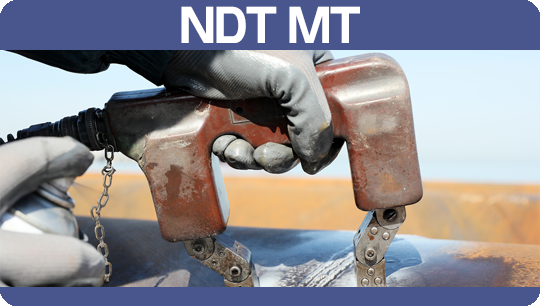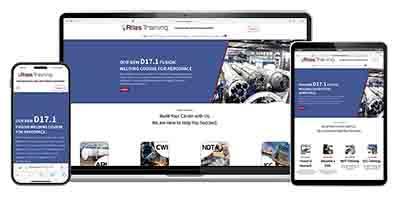Online Magnetic Particle Testing (MT) Class: Levels I/II
The most convenient and economical way to meet the classroom requirements for ASNT MT Level I/II certification.

Included in the Magnetic Particle Testing Course:
$ 499 .00
- 20 hours of online classroom lessons
- Certificate of course completion
- ASNT Accredited for 20 MT Training Hours
- Counts as 20 Professional Development Hours for AWS CWI 9 Year Renewal
NDT MT Training Course:
Magnetic Particle Testing (MT) Levels I/II
Atlas Training™ offers online exam prep training for all areas of NDT.
Train with our NDT-PT Course.
The most convenient and economical way to meet the classroom requirements for ASNT MT Level I/II certification

NDT Magnetic Particle Testing Levels 1 and 2
- NDT MT 20 hours of coursework and online prep.
- AWS Accredited for 20 hours toward the CWI 9-Year Renewal and for Professional Engineers.
- Professionally developed courses are created and reviewed by field experts.
- Instructor support is available when you need help.
- Online convenience lets you set your schedule and study at your own pace.
$499
User Reviews
What our students have to say about our courses
"I would recommend the online course"
"The course was very informative and this course has truly helped me to get the preliminary pass result in the first attempt. I would recommend the online course to anyone who wants to take the API test."
-Arjun Janamatti - Tulsa, OK
"I am completely satisfied with the course structure"
"Passed! Thanks again to the great training course you provided. Nothing like passing on the first go."
-Grahm Rademaker - Merrillville, IN
"It allowed me to have a good family-work-study balance"
"Atlas API Online Training worked extremely well for me. It allowed me to have a good family-work-study balance because I had access to the courses anytime. Thanks, Atlas!"
-Joe the Welder
"I want to say thank you"
"I want to say; thank you for developing the online training courses."
-Denise May - Michigan

6 Month Access to the Course
Study on your time, review over and over.

Atlas Audio Flashcards™
Listen and study during your morning and evening commute.

Visual & Narrated Online Curriculum
You learn better when you can see, read and hear the course material.

Timed & Simulated Exams
Take simulated exams before taking the real thing.
Money-Back Guarantee




